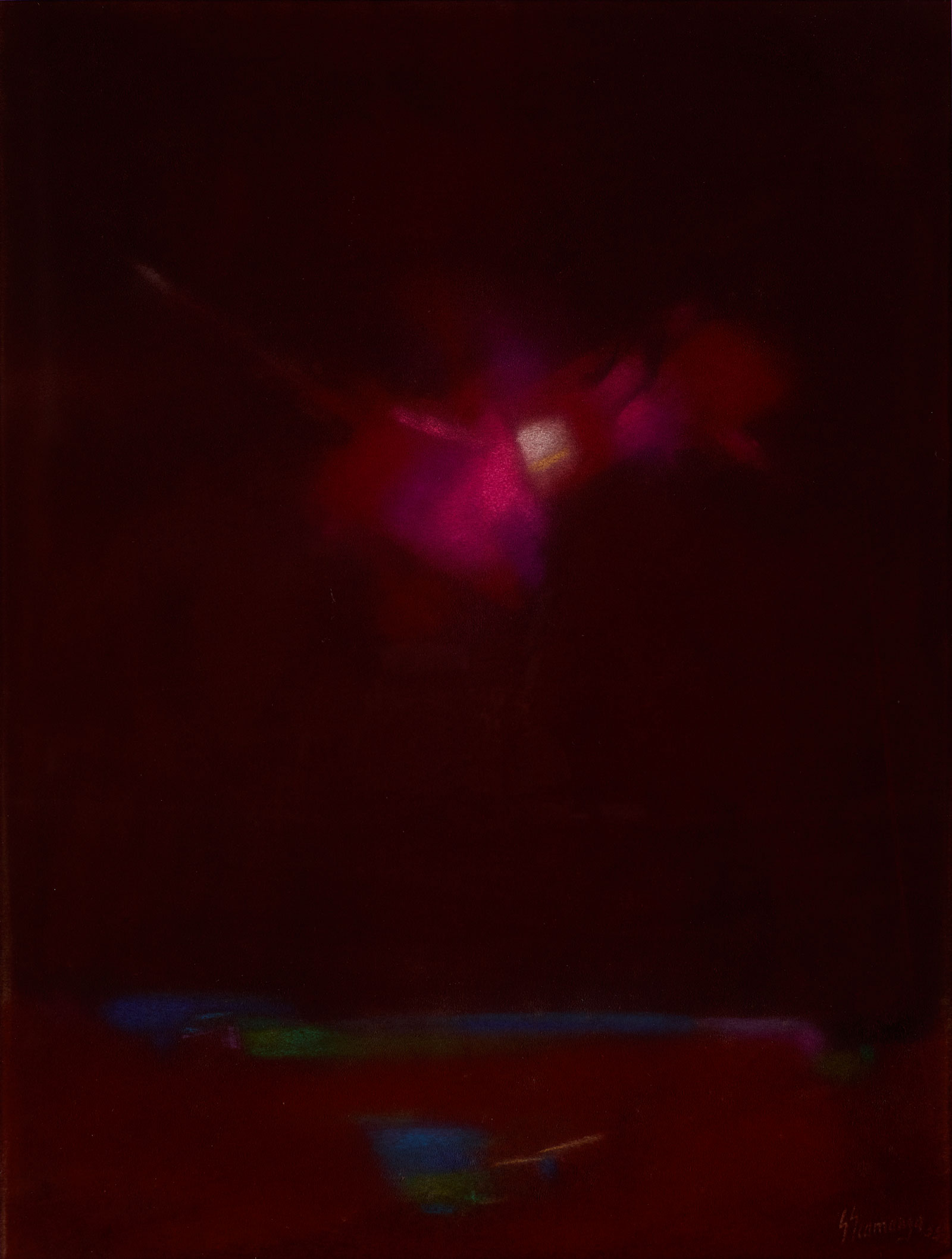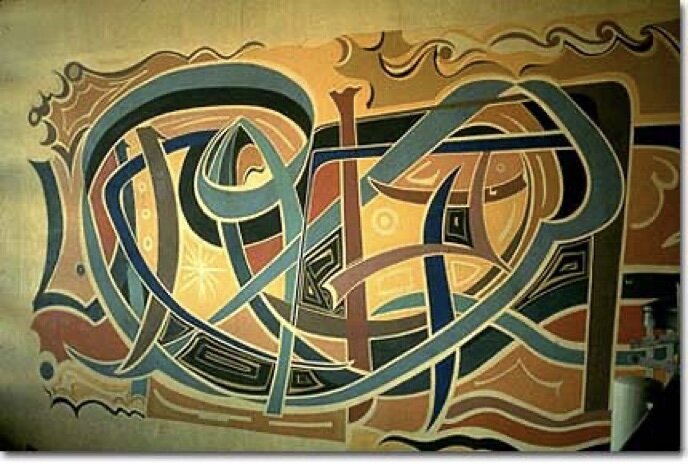In the 1960s, Lebanon opened up to western art currents, especially abstract art. Whereas some artists embraced it as a chance to introduce western progressive art into the Arab world, others saw it as an opportunity to revive an artistic and cultural heritage, still in a modern approach. The latter artists sought a distinct artistic identity far from European and American dominant art movements.
One of the artistic groupings to establish this identity included artists Stelio Scamanga, Adel Saghir, and Mounir Najem; they were inspired by artist Said Akl, the first to start a Middle Eastern art style. Akl painted cyclic patterns derived from letters generating a mystical effect associated with Sufism. Although the three artists’ endeavour was short-lived, the importance of Scamanga, Saghir, and Najem lied in their serious attempt to start a formal art trend in Lebanon. The three artists represented a movement towards ‘Oriental Abstraction,’ a term used by the master calligrapher and theorist Samir Sayegh in 1971.

The architect and painter Stelio Scamanga wrote a manifesto entitled ‘Vers un Nouvel Espace: La Perspective de L’Abstrait’ (Towards a new space: The perspective of the Abstract) in 1964, in which he lays out the tenets of eastern abstract art – ‘Oriental Abstraction’. He presented it as an exhibition statement during his 1965 solo show at Gallery L’Amateur in Beirut. In his manifesto, Scamanga denounced the three-dimensional illusionistic representation of space adopted in western art, known as 'linear perspective.' Linear perspective was first devised by Italian architect Filippo Brunelleschi, in the 15th century, as a spatial representation mode based on virtual viewpoints and a rigid mathematical system. This was adopted by Italian Renaissance artists.

Scamanga proposes a ‘New Space,' a pictorial space of infinite cosmic viewpoints represented in two-dimensions: one is a flat surface, and the other an elevating mystical dimension. This flat mode of representation is present in oriental middle and far eastern arts, such as Byzantine Icons, Japanese landscape, and Islamic art – a purely abstract art. In a later correspondence1, artist Stelio Scamanga explains that the east differs from the west in their artistic perceptions. Eastern art begins from the spiritual, whereas western art draws from the physical. Most Western abstract art forms, he argues, are based on reducing or deconstructing an image derived from a tangible object or a scene present in the physical world. Eastern abstraction has always been concerned with a metaphysical reality that lies beyond our immediate senses.
 |  |
In 1969, in an interview with the three artists, Samir Sayegh asked all three about what links their art together. The painter and sculptor, Adel Saghir, replies, "what unites the three of us is that we work on a single problem, and set off from a single point of departure. This problem is the mastery of an expressive language […] sprouting from roots planted in this land."2 Adel Saghir was the artist behind the 1961 prize-winning mural, inspired by Arabic calligraphy and Phoenician art, situated in Beirut International Airport's arrival hall back then - Rafic Hariri Airport now.
Scamanga, Saghir, and Najem emphasize the importance of color and light. Each artist has his own technique in color combination to attain the desired reflection of light. Drawing from the ornamental art of Arabesque, their paintings feature organic and geometric shapes. Painter Mounir Najem, known for his hazy depictions with square shapes, speaks about the importance of an open-ended composition in his work. “I dedicate my painting to the river of movement,” he explains, “so for me, the painting is not the prisoner of a delimited frame but exists in free space.” In Stelio Scamanga’s paintings, which portray inward-oriented movement, the center is only a point of departure into a universal cosmic infinity. The peripheral borders are nothing but barriers that the viewer must overcome to abandon individual and corporeal identity and be attracted once again to the center. These forms are linked to a philosophy of Sufism that focuses on the center of one's inner self as a departure point.
Samir Sayegh himself elaborated on the notion of “Oriental Abstraction” in a filmed interview presented in Sursock Museum’s 2018 exhibition “Ten Stories from The Sursock Museum Collection (1923-2016).” Sayegh reminds us of “the relationship between tajrīd, abstraction and the Sufi concept of tawhīd, meaning the attainment of complete mystical unity with God through the passing away of worldly reality.”



Comments on Proposing a New Space: ‘Oriental Abstraction’ in 1960s Lebanon